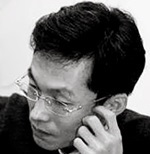
Department of plastic and Reconstructive Surgery, Ilsan Hospital
Dongguk University Medical Center, Gyeonggi-Do, Korea.
Office: http://www.dumc.or.kr/index00.jsp
Personal: http://beautyportal.co.kr
BAPA Website http://bapa.co.kr
In this article, we will take a closer look at the standards of facial attractiveness.
Many scholars around the world have extensively investigated the secret of beauty under the assumption that universal, absolute, and everlasting standards of beauty exist. Scholars want to find out scientific or arithmetic principles of beauty regardless of race, ethnicity, time period, and gender. This attempt to define or discover absolute standards or principles of beauty is closely related to inherent human desire in itself.
Absolute standards of a beautiful or attractive face
There have been attempts to discover absolute standards of beauty in the field of facial aesthetics. Typical examples of such attempts would be the golden ratio (a.k.a. Phi mask or divine proportion) theory, the theory of symmetricity, and average theory of facial attractiveness .1-3
The golden ratio theory was established by a Greek mathematician, Euclid, based on the idea of segment division. It is known that the golden ratio of 1: 1.618 can be found in the Parthenon of Athens, Pyramids of Egypt, and the statue of Venus, the Mona Lisa by Leonardo da Vinci and even in a credit card. Many studies have been published based on the hypothesis that this golden ratio can be always applied to analyze facial beauty or attractiveness 4-9. However, the trial to unifying the beauty standards by the golden ratio fails to reflect the different characteristics of facial beauty according to difference in races, gender, and ages. In other words, we have come to realize that the golden ratio is not perfectly matched and not an appropriate tool for measuring and analyzing the face for all races when it comes to cosmetic surgery.10-16
[Advertisement] Ultra Skin/Pastelle – Manufacturer: WONTECH(www.wtlaser.com)
Theory of symmetry is another attempt to establishing absolute standards of beauty. This theory is based on the idea that symmetrical beauty is always found in beautiful architectures of ancient Rome or the Middle Ages. The theory explains that a beautiful face must be symmetrical because symmetricity is the key measure of facial attractiveness.
The theory of averageness isanother example of trial to beauty unification. Some scholars, using method of facial morphing, tried to prove that only average face is beautiful. They made a composite face by randomly mixing photographs of many different faces to create an averaged image. Experiments have tried to prove that this average composite image of faces is always considered as more beautiful than any other faces. In practice, however, the application of the theories of symmetry and/or average was very limited. As people have come to realize that complete symmetric or uniform features of the face are not always beautiful, these outdated theories on absolute standards of beauty have become irrelevant. 17-20
Then, what are the real standards of a beautiful face?
Many people in the Western culture criticize that Asians undergo plastic surgery to resemble Caucasian faces. Such criticism lacks scientific evidence and may even stem from racial discrimination. In a photographic facial morphing study, a woman’s composite face of mixed-race was regarded as the most beautiful one byrespondents of all races. This seems to be due to the biological, genetic, and scientific background of heterosis, or hybrid vigour 21. Today’s Caucasians tend to regard some facial features as attractivesuch as thick lips and darker skin tones of the black race, as well as more squared lower mandibles, sharp shape of eyes like as a Jaguar, and prominent cheek bones of the Asian races. On the other hand, Asians are attracted to Western facial features such as light and white skin tones, a higher nose bridge, large eyes, and small and slender shape of face. This can be compared to the Hellenistic ideals of cultural integration where Western and Eastern characteristics of cultures were combined. It is a natural phenomenon. I want to stress on the fact that beauty preference of one race is not related to worship of other race but simply a cultural phenomenon rooted in the scientific rationale and genetics.
The theory of relativity also exists in physical attractiveness
One may wonder, ‘do absolute standards of beauty even exist?’ To answer that question, I would like to say that there are no absolute standards of beauty. Standards of a beautiful face differ across time periods, races, and sexes. In a sense, Einstein’s theory of relativity could be applied to the concept of beauty.
Positing the theory of relativity, Einstein discussed that unlike the Newtonian dynamics where universal and absolute time exists in all observers, measurement of time intervals in the special theory of relativity can vary depending on the standards of measurements. He argued that in other words, an event seen simultaneously occurring under a particular frame of standards may not be simultaneous in another frame. According to Einstein, simultaneity is not an absolute concept and can differ depending on the motion state of the observer.
I would like to emphasize there are no universal or absolute standards of facial attractiveness. Instead, relativity exists in the idea of beauty across race, ethnicity, sex and time periods. However, the current practice of plastic surgery seems to rely on the assumption that there are absolute and universal principles of beauty. Many plastic surgeons perform or adopt uniform or identical surgical techniques to every patient to achieve a same standard goal of beauty. For these reasons, many recipients of plastic surgery seem to have artificial and unnatural appearances that are very similar to each other.
It is important to remember that the harmony or balance of Asian and Western standards of beauty is not just discarding what we have and blindly copying facial features of other races. The harmonization and integration of two cultures can create true beauty only when the original features of one’s own are preserved and respected.
Beauty difference in terms of generation
We can find there have been great changes in beauty conception throughout time.
From the 1960s to today, if we perform a photogrammetric study of famous and beautiful actresses, we can easily find that there have been lots of differences and changes in the degree or configuration of the lips protrusion, lip thickness, height of the nasal bridge, the ideal angle of the nose, and so on. However, a question remains as to whether the current facial contouring procedures have adequately reflected the changed aesthetic standards of the time period, race and ethnicity. Speaking practically, it is almost impossible because there have been paucity of statistic data about ideal aesthetic norms or standards according to different time periods or races. In fact, as accurate quantitative statistics on attractive norms or standards had been very difficult to acquire, many plastic surgeons performed stereotypic aesthetic procedures relied on old aesthetic standards rather than using contemporary beauty standards.
(A composite image of beautiful faces of the 1960s, 2006 and 2009, from left to right)
-To be continued-




















